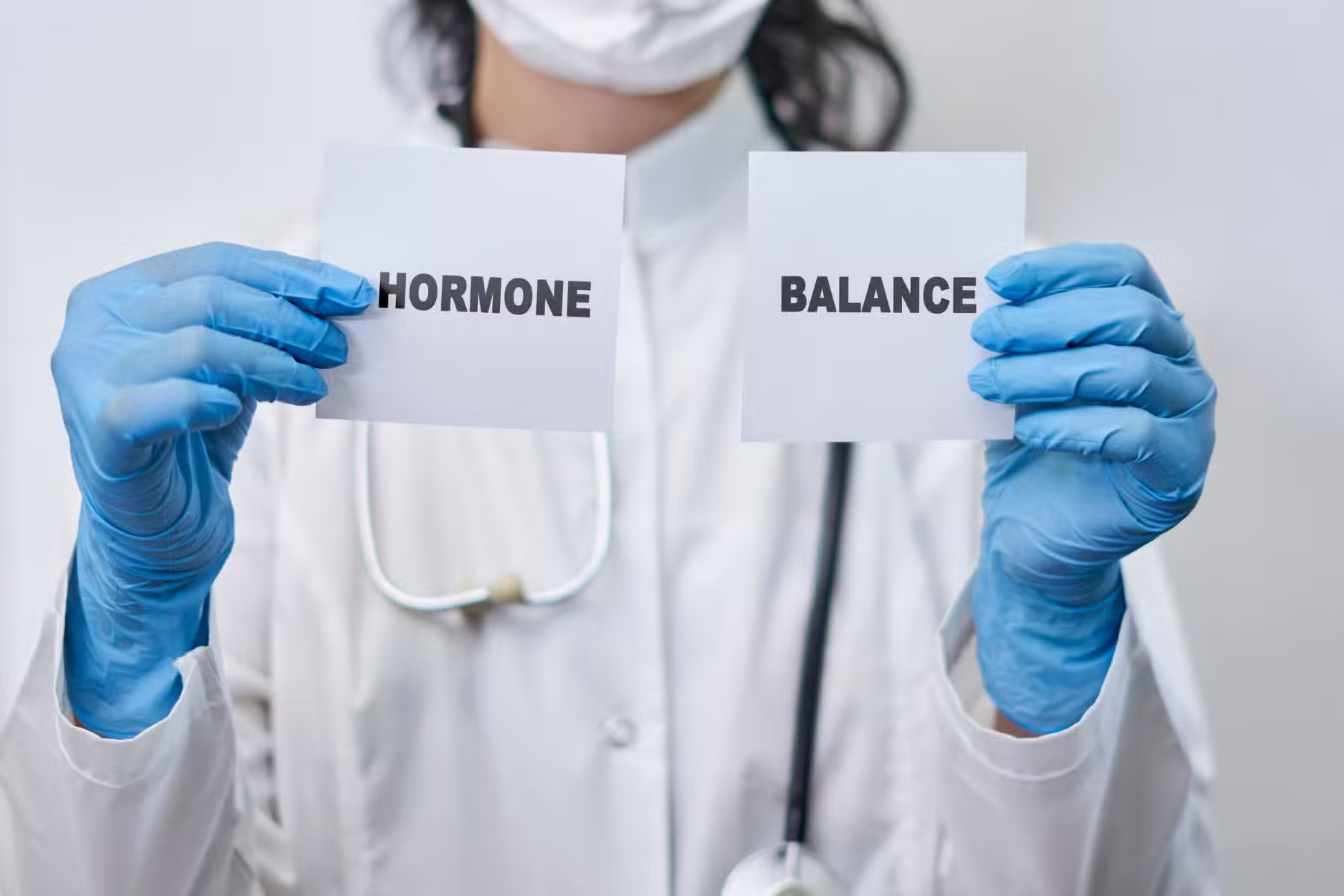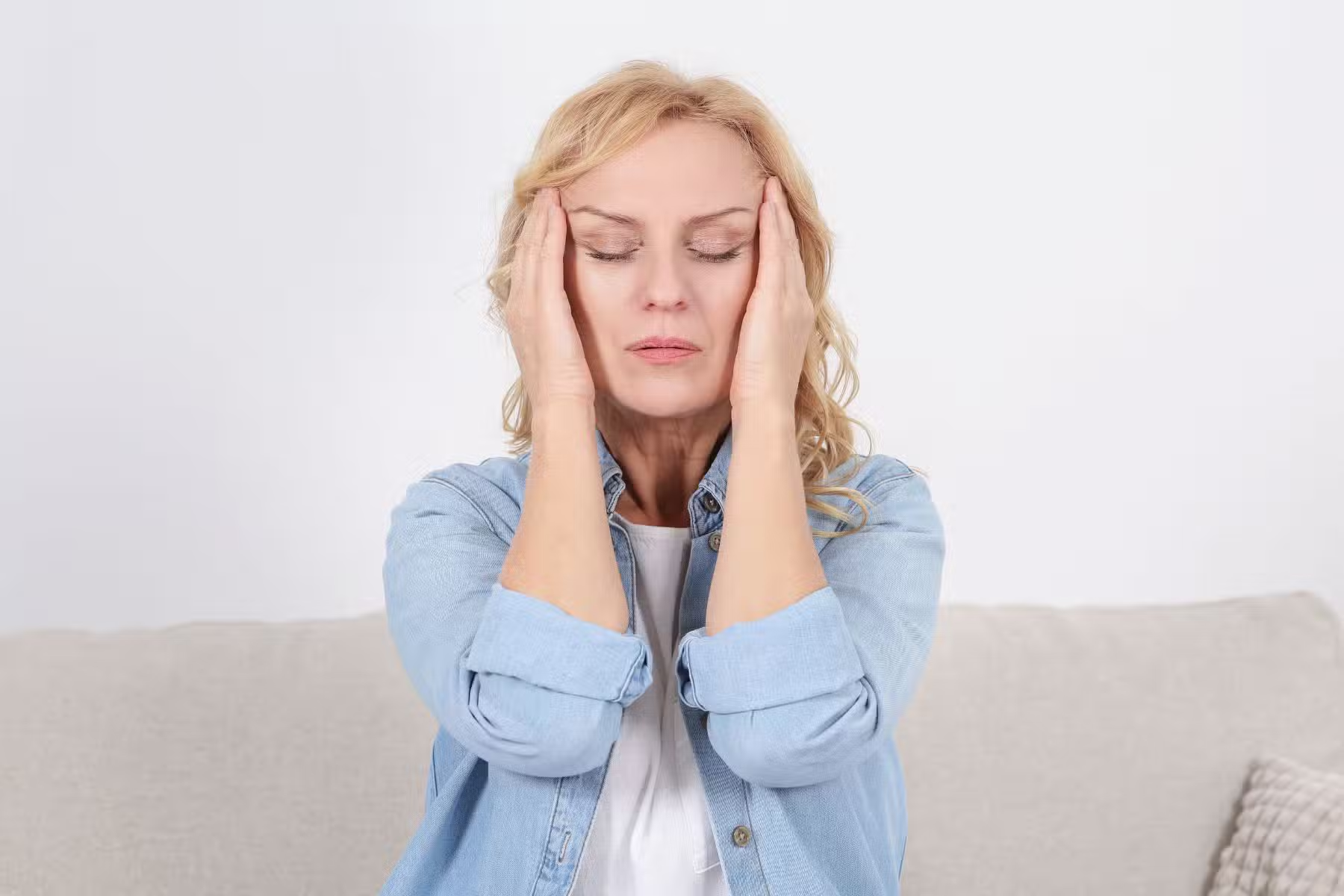Uncover the impact of hormones on your skin, and how to restore balance without a negative effect on your endocrine system and skin.
When we think of hormonally imbalanced skin, our minds immediately go back to the acne-ridden days of adolescence (unless you were one of the fortunate ones to escape teenage acne). However, hormonal imbalances can influence our skin beyond acne flare-ups.
Let’s delve into the multifaceted aspects of hormonally imbalanced skin, exploring how it manifests, and most importantly, what you can do about it without making it worse, or compromising your hormonal health.
What is Hormonally Imbalanced Skin?
Your skin is a reflection of everything that is going on internally. When your hormones are out of balance, these effects manifest visibly on your skin. This is quite common. A recent survey found that of 2000 American women between the ages of 30 to 60, 47% have experienced symptoms of hormonal imbalance (Dr. Anna Cabeca.).
Hormones, especially in women, undergo significant fluctuations throughout life—from puberty and adulthood to pregnancy and menopause. These stages often come with radical changes in our skin ranging from acne and excessive oiliness, dryness and/or dehydration, and heightened sensitivity.
While everything in our bodies is interconnected, it’s primarily estrogen and testosterone that have a major impact on our skin.
Estrogen is essential for collagen and elastin, skin hydration, and improved barrier function.
When there’s an imbalance, it affects the skin’s thickness, wrinkle formation, moisture levels, and collagen production. It plays a crucial role in conditions like melasma, and adult acne (AKA hormonal acne).
Androgen, the primary male hormone (including testosterone), stimulates the production of sebum which can lead to acne and oily skin.
Sings of Hormonally Imbalanced Skin

The Root Causes of Hormonal Imbalance
This can be attributed to both internal and external factors.

While we can’t go against nature and stop the aging process, we can control the external factors that affect our hormonal health and consequently our skin. Long-term exposure to toxic chemicals can have negative effects on hormones like premature puberty and menopause, decreased fertility levels, and in the worst cases, cancers.
So, how can we restore skin balance without further affecting our hormones and making the problem worse?
Restoring balance, the natural way

While restoring hormonal balance may require specialist consultation based on severity and life stage, addressing your skin without adding to your toxic load is possible. Here are some tips:
- Personalized Skincare: Understand your core skin concerns and address them with minimal products tailored to your specific needs. (See our blog on skincare microdosing for more details)
- Choose Non-Toxic Skincare: Opt for non-toxic skincare products free from endocrine-disrupting ingredients like parabens, phthalates, fragrances, UV filters, and sulfates to avoid contributing to hormonal imbalance.
- Dietary and Lifestyle Changes: A balanced diet, organic food choices, water intake, more sleep, and stress reduction can significantly benefit your skin and hormonal health.
Acknowledging that many skin concerns stem from hormonal imbalances is the first step toward finding effective solutions. Understanding the causes and implementing natural remedies can empower you to regain control over your skin and overall well-being. It’s crucial to make informed choices when it comes to skincare, diet, and lifestyle to achieve sustainable skin health while preserving your hormonal equilibrium.
At Results by Nature, our integrative skincare specifically targets hormonally imbalanced skin while respecting your skin and hormonal health, addressing issues at the root for sustainable results.
Sources:
U.S. Department of Health and Human Services. (n.d.-a). Endocrine disruptors. National Institute of Environmental Health Sciences. https://www.niehs.nih.gov/health/topics/agents/endocrine/index.cfm
7 hormone disrupting foods to avoid. Biowarrior Nutrition Shop. (n.d.). https://www.biowarriornutrition.com/blogs/blog-page/7-hormone-disrupting-foods
Skin conditions by the numbers. American Academy of Dermatology. (n.d.). https://www.aad.org/media/stats-numbers
Gledhill, N. (2021, December 2). I’m fed up with my Melasma hormonal pigmentation. how can I treat it? Victorian Cosmetic Institute. https://www.thevictoriancosmeticinstitute.com.au/2017/02/hormonal-pigmentation/#:~:text=Melasma%20is%20a%20form%20of,hormone%20replacement%20therapy%20(HRT)
Eve, L., Fervers, B., Romancer, M. L., & Etienne-Selloum, N. (2020). Exposure to Endocrine Disrupting Chemicals and Risk of Breast Cancer. International Journal of Molecular Sciences, 21(23). https://doi.org/10.3390/ijms21239139
Dr. Anna Cabeca. (2021, March 19). Hormones & Health: What many women don’t know. https://drannacabeca.com/blogs/keto-alkaline-diet/hormones-health-what-many-women-don-t-know
Exposures Add Up – Survey Results. EWG report || skin deep. (n.d.). https://web.archive.org/web/20040809233605/http:/www.ewg.org/reports/skindeep/report/exposure_survey.php




Leave A Comment